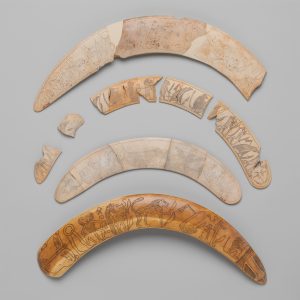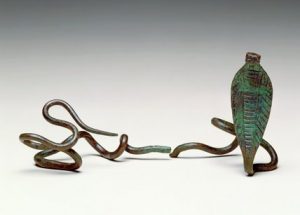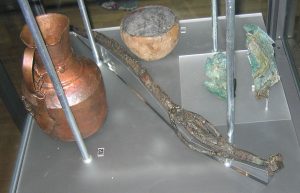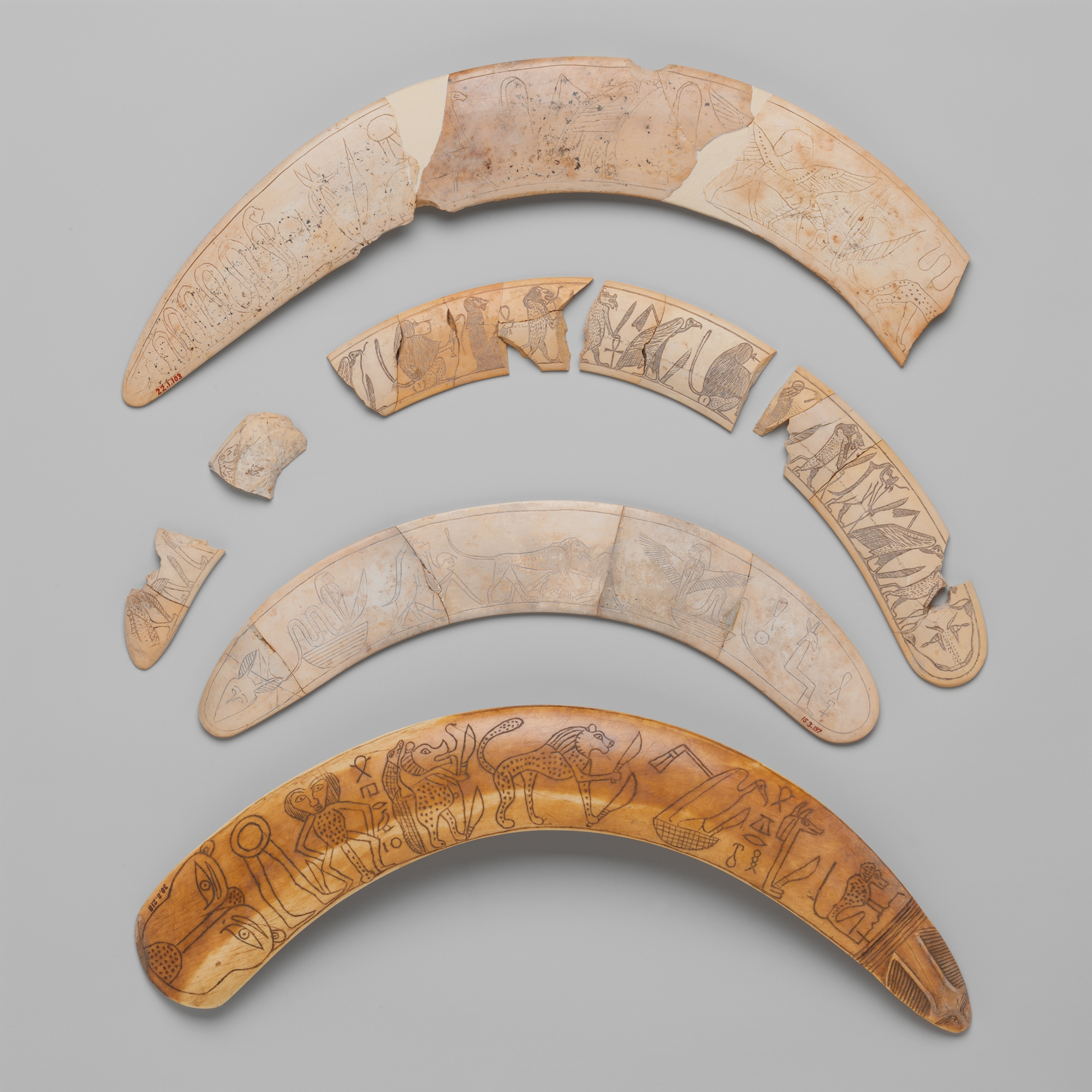Welcome to the third part of what is turning out to be a gargantuan series! You know, when I first decided to write this series of posts, I didn’t think I’d end up churning out so many words on this subject (especially not from a predominantly Pagan perspective). However, like almost every time I’ve gone to a bar for “just a couple of pints” only to come back completely trollied, this seems to have gone a little bit further than expected.
So, where was I?
Ah yes, that’s right. I was discussing the matter of authority, the necessity of attaining it, and ways in which it may be obtained. You can pick up those earlier posts here and here. But all you need to start out here knowing is that otherworldly hierarchies and spiritual authority have always been a part of magic (speaking in a relatively general sense here). And like kids trying to bribe the toughest kid in school to keep the bullies in line, we’ve sought blessings and favor from the big kids among the Unseen since we first started grabbing wands and spitting out barbarous words in our circles.
Wands and Authority?
Which is where we come to wands, because they’re not *just* for channeling energy; there is a connection to spiritual authority here too.
If you look at the older grimoires (and more specifically the sections on tooling), you’ll often find quite detailed instructions on how to make the tools required for working the magic of that particular grimoire. Certain materials may be required, things must be done at certain times, and certain prayers or incantations must be said while doing those things. For the most part, I don’t think the majority of Pagans understand why all of that is even necessary, and some seem to consider complexity a sign that something is new.
However, I don’t believe that to have been the original purpose of a wand, and if anything, it is my opinion that the grimoire instructions (for all their seeming complexity), are the product of far more ancient concepts.
(Side note: Why do we always equate “older” with “less complexity”?)
A Brief History of Wands: Ancient World Edition
For the ancient Egyptians, wands were either in the form of a snake or the form of a “throwing stick”. The throwing

stick wands were quite decorated, like far finer versions of the “throwing sticks” used by the Ancient Egyptians to bring down birds; they were evidently also thrown during ritual (Skinner 126-127). The snake wands though, were more akin to the wands we carry now; the oldest of which (as far as I’m aware) was found in a 16th century BCE tomb in Thebes. Made out of bronze and in the form of an elongated cobra, it would have been a fine, impressive piece in its day.
For Geraldine Pinch (quoted in Skinner P126), the rationale behind these wands was clear:
”Staffs of various kinds were standard symbols of office in Ancient Egypt, so magicians who wished to command demons and spirits naturally used them too. In the Book of Exodus, Pharoah’s magicians and the Hebrew leader Aaron are all able to turn their staffs into live snakes but Aaron’s snake is said to have overcome and swallowed the others.

And we cannot overlook the materials with which these wands were made. For the most part, the snake wands were of bronze, and the throwing sticks of ivory. However we also find reference to the use of an iron staff by Anubis. Is it any coincidence that the god who guided the souls of the dead would wield a staff made of the metal that the dead are reputed to fear? Or that the necromantic rites of the Greeks also featured the use of iron swords in order to keep the press of the mighty dead in line? Put a pin in this, for we shall return to it later.
Picking up the trail from Ancient Egypt, we find the earliest reference to a wand in the Greek epic The Odyssey, where Hermes was characterized as the “god with the golden wand”. Skinner points out here that the wand of Hermes is the Caduceus – itself a snake wand of sorts (Skinner 127).
But as we saw from Geraldine Pinch’s interchangeable use of the words “wand” and “staff” and the example of Anubis’ staff, the wand could take other forms. Or rather, different items could fulfil the function of the wand. To further elucidate, I refer you to P201 of Aaron Leitch’s endlessly interesting Secrets of the Magickal Grimoires:
“…the magicakal wand or scepter also possesses a probable origin in ancient fertility rites. It is the symbol of male virility, and may have once been used in a very practical manner in conjunction with anointing oil. Later on, this was utilized in a symbolic manner in the rite of marriage related to the consecration of the sacred king. The taking of the scepter was often as important as the donning of the crown in the inaugural ceremonies.
From that point, the significance of the scepter or rod spread in several cultural directions. In the hands of the king the scepter became a standard symbol of power and governance…The magickal wand has been a tool of the priest and magickian for thousands of years , as we can see in lands such as Egypt, from which we most directly borrow our occult understanding of the instrument. The wand held by the mage confirms his own authority over spiritual and earthly forces.”
Because what greater staff of status is there than that of a king’s scepter?
When viewed from this perspective and from within the framework of spiritual hierarchies, the complex instructions of the grimoires make perfect sense: you are creating a counterfeit of the status symbol carried by whichever authority figure is recognized by the spirits of that grimoire.
The Germanic Perspective
But the evidence for the concept of wand-as-symbol-of-spiritual-authority is not limited to the Classical World, Near East, and Ancient Egypt. There is also evidence for similar concepts in Northwestern Europe in the form of the staffs of sorcery (a category of staffs found in the graves of suspected ritual specialists which often resemble distaffs). I include an excerpt from my forthcoming book by way of explanation here.
There were two main types of these staffs of sorcery as far as we can tell from the sources and archaeological finds: the first type was of wood, and the second of iron. These staffs differed from the distaffs of everyday use in a number of ways. The ones of iron were heavy, which would have made them all but impossible to spin with. One does not need to spend much time spinning with a distaff to find out that it must be relatively light in order to be useful. With a heavier distaff, your arms would quickly grow tired from trying to hold it in place, and this would make it an impractical tool for every day use. The wooden staffs would have made better distaffs in terms of weight, however I still do not believe they would have made a particularly good choice for everyday use. There is reason to believe that they may have been as “crooked” as the divinely crooked staffs once carried by the Baltic priests of old. This would make the process of pulling fibers from the distaff for spinning less smooth. Moreover, in the case of the one found in the Oseberg ship burial, at least one of those staffs was actually hollow in the center – a modification which I believe would have made it too breakable for daily use.
There was also the matter of length too; the historical staffs of sorcery were also somewhat shorter than the staffs  carried by modern practitioners. For example, the Oseberg staff measures 107cm; which is a far cry from the usual image of the seer/ess with a staff that comes up to at least shoulder length.
carried by modern practitioners. For example, the Oseberg staff measures 107cm; which is a far cry from the usual image of the seer/ess with a staff that comes up to at least shoulder length.
But the peculiarities do not stop there, and this is where things get really interesting.
The iron staffs are quite curious in a number of ways. Firstly, they were in all likelihood far harder to make than swords. This means that not every blacksmith could have produced one, and so there is the aspect of rarity and prestige that must have gone hand-in-hand with possessing one. Secondly, there is a good chance that they were carbonized with human or animal remains, thus producing a link to the ancestral or animal world. Indeed, iron production itself was sometimes even located in cemeteries.
Moreover, we cannot forget that the smith was not just a worker of metals: they too were liminal figures in the Viking Age. It is a deep magic to create a staff that has not only touched both the dead and the Other, but that few of your contemporaries could reproduce. That is not something that can simply be bought from a craftsman on the internet, that is more like the dwarven-forged spear-staff carried by the God of the Roads.
Which brings us to another interesting set of crossroads.
In many ways, despite the more shamanic interpretations, these staffs were like wands in that they often seemed to denote authority: authority to those around you, and also the authority wielded on the behalf of whichever deity patronized your arte.
“It may be …(..)..that both Woden’s spear and the sibyl’s staff have the same origin and the difference is accounted for by the fact that each denotes authority in different areas. In Woden’s hand the staff becomes a spear because that is an ancient symbol of warrior rule; Veleda’s symbol remains staff-like weaving beam or distaff, however, because it still suggests one type of authority and is also easy to associate with weaving sticks, spindles, and weaving swords, all of which remind one of the widespread concept of the weaving of fate.” world. Indeed, iron
The iron distaffs, though conceivably of the Dead, could also be wielded against the Dead. Iron is an age-old apotropaic, and when needed, the distaff could so easily have become as the Greek sword wielded at the pit.
The wooden staffs also had their connection to the underworld and Other; for you could not just walk out into the woods and take any stick. As best as we can tell, these staffs were received *from* the Other. This is also true to some extent with the iron staffs, as the smith is also other (albeit in his own way).
But times and beliefs diversify. The staff that started out as one but became a spear in the hand of a god of warriors and remained a distaff in the hands of a seeress would go through many changes over the years.
Indeed.
Final Words
Hopefully you can see the various threads of commonality between the Germanic/Scandinavian evidence, and that of the ancient world. There are some interesting questions that come up here. For example, could it be mere coincidence that iron staffs would be connected with the dead in both Ancient Egypt/Greece and Northwestern Europe? Is it mere coincidence that divinely “crooked” staffs of sorcery – snakelike perhaps in their appearance – would exist thousands of miles from those of the Egyptians with their very crooked snake wands?
I honestly don’t know. Regardless of all of those wonderful rabbit holes though, I think there is a good argument that the idea that wands were tools that denoted authority was both ancient and widespread.
So how can you incorporate that knowledge into your work?
Think about the beings from whom you derive your patronage, or in other words, your authority. What are their symbols? What were they depicted as carrying? What did those things look like? What are the connections in terms of materials (ie iron with the dead)? What can you recreate, and most importantly, are your patrons okay with you carrying such status symbols in their name? (Divination can help here, preferably from someone who is not you.)
Then get to work – it’s as simple as that.
As for the Other gotten staffs, well, I’ll get to that next time.
Sources
Techniques of Graeco-Egyptian Magic – Stephen Skinner
Secrets of the Magickal Grimoires – Aaron Leitch
A Biography of the Seidr-Staffs. Towards an Archaeology of Emotions – Leszek Gardela

